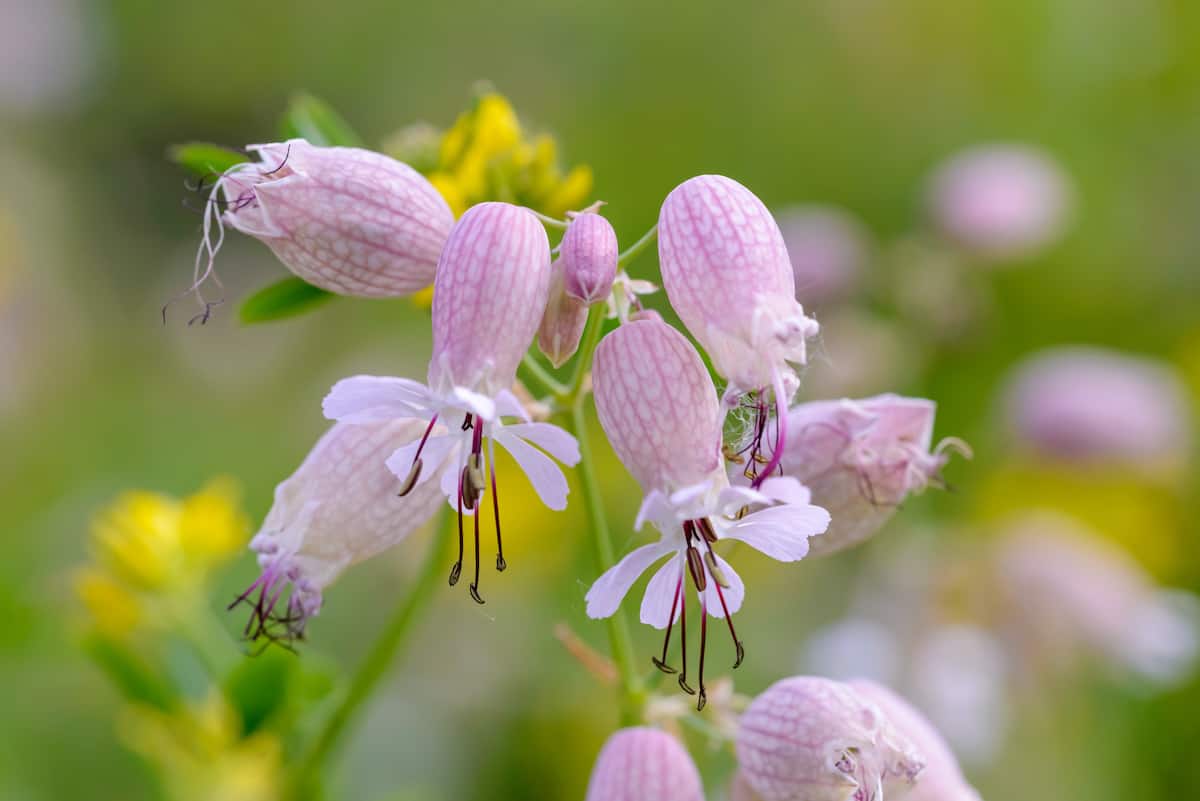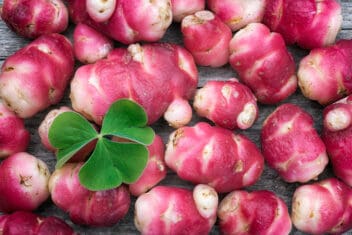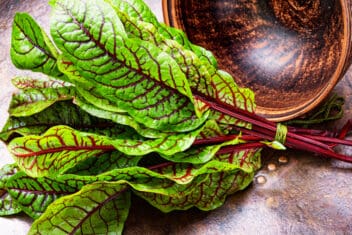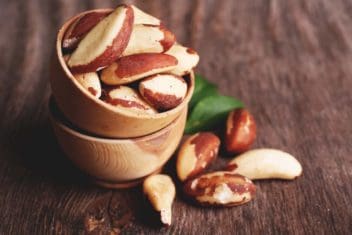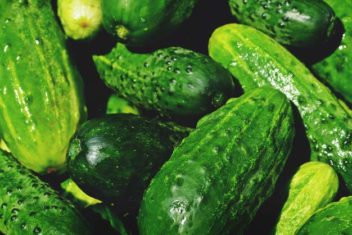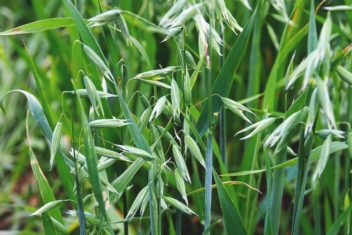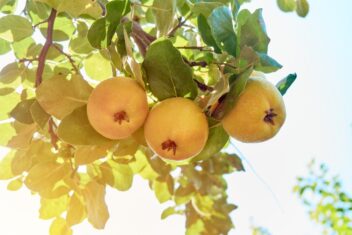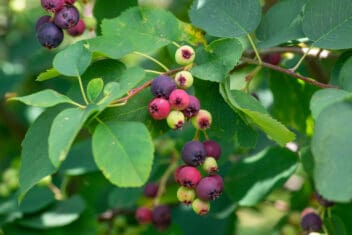Have you heard of sculpit? If the answer is no, you’re not alone. I hadn’t either until about two years ago when I found some seeds at a local farmers market. Since then, you can find me growing sculpit non-stop.
Why? Sculpit is a cinch to grow and tastes incredible in risottos, salads, and egg dishes. Its unique flavor tastes like a combination of tarragon, radicchio, and arugula.
Sculpit also has long flower stems, suitable for cut flower arrangements. There’s nothing not to love.
What Is Sculpit?
Sculpit is a common herb in Italy and Spain, but relatively unheard of in North America. It has long, narrow, lance-like leaves that have a delicate, subtle flavor. It’s a touch bitter, like chicory, with a hint of something similar to tarragon, combined with the spice of arugula.
This isn’t just a tasty kitchen herb, however. The plant also sends out delicate little balloon-like flowers in shades of pink and white.
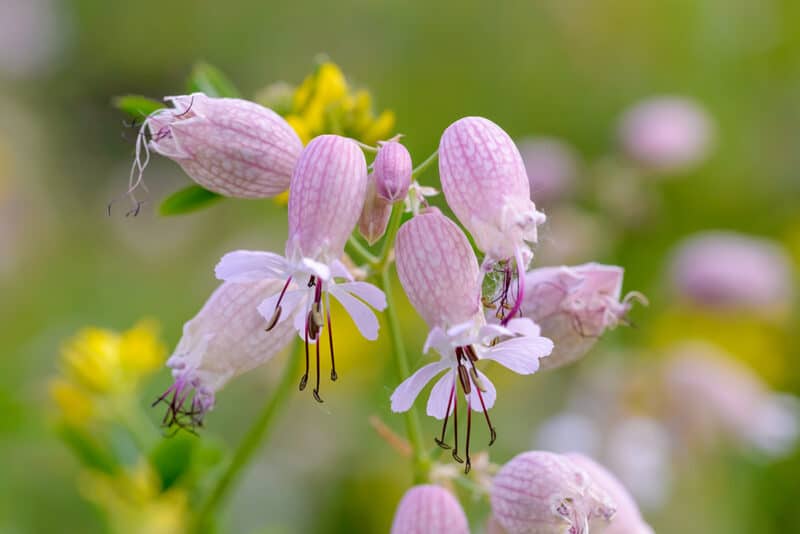
Pollinators love sculpit flowers. You’ll see honey bees completely disappear into the bulbous flowers and reemerge laden with pollen.
Sculpit (Silene inflata) is an heirloom herb, so there aren’t a ton of varieties as with some other plants. You’ll see it called stridolo or sclopit.
It’s closely related to Silene vulgaris, known as bladder campion or maidenstears, which grows wild in the meadows of North America and is native to Europe.
Planting Sculpit in the Garden
Sculpit is one of the easiest herbs to grow. You almost can’t go wrong, even if your soil isn’t great.
Sculpit thrives as a perennial in zones 7 and above, but you can grow it as an annual anywhere. Full sun is best for growing sculpit. If you live in an area with harsh sun, provide a little afternoon shade.
One of the reasons I love growing sculpit is that it couldn’t care less about the soil. As long as it’s loamy and well-draining, nothing else is important. Try growing it in soil that other plants struggle in.
The richer the soil, the more leaves, and the fewer flowers you’ll get. If all you want is the leaves for culinary purposes, then fertilize and dig in well-rotted manure. If you want to experience the unique flowers, plant it in less fertile soil.
When to Plant
Plant in a greenhouse or indoors in early spring, 6 weeks before the last frost.
If planting directly outdoors, wait until the last frosts have passed and the weather in spring is becoming consistently warm.
The best results I’ve had are when I planted in pots in a greenhouse in early spring and directly in the garden in late spring to early summer.
Planting the Seed
If planting directly in the garden, sow seeds 1/2 inch deep and cover lightly. Firm the soil slightly and water. Be careful not to flood the small seeds with water. Just give them a light sprinkle.
Indoors, plant in a seed starting soil 1/4 inch deep and keep the seeds moist until they germinate using a spray bottle.
Transplant into the garden when the plants are big enough to handle in late spring to early summer. Make sure to harden them off for a week before planting.
Plant at least 4 to 6 inches apart.
Container Planting
Sculpit grows well in containers and I’ve let one overwinter outside in the pot. It grew well the following season.
Use a large 5-gallon pot and plant about 2 to 3 seeds. Thin out if necessary. Keep the soil moist and feed once a growing season with liquid fertilizer.
If you get the flower to leaf ratio right, sculpit is pretty enough to have as a potted flower.
Caring for Sculpit
Like a lot of herbs, sculpit is easy to grow. Even a nervous beginner will have few problems with this one.
Fertilizer
If the soil is rich, sculpit will grow mainly leaves and few flowers. If you’re okay with that, feed the garden with all-purpose fertilizer before planting and then once a year in the spring.
If you would like to experience the wonderful flowers of sculpit, don’t feed it at all unless it appears to be extremely slow-growing.
Water
Water frequently in the summer and avoid letting the soil dry out. Don’t let sculpit sit in wet puddles or the roots will rot.
Pruning
Prune only if you want to shape sculpit, especially if it’s in a container. Pick the leaves at any size because this magical herb will keep replacing them for you.
Companion Planting for Growing Sculpit
Plant sculpit with the following plants:
Common Problems and Solutions for Growing Sculpit
Sculpit is a hardy herb, but it’s susceptible to some issues.
Aphids
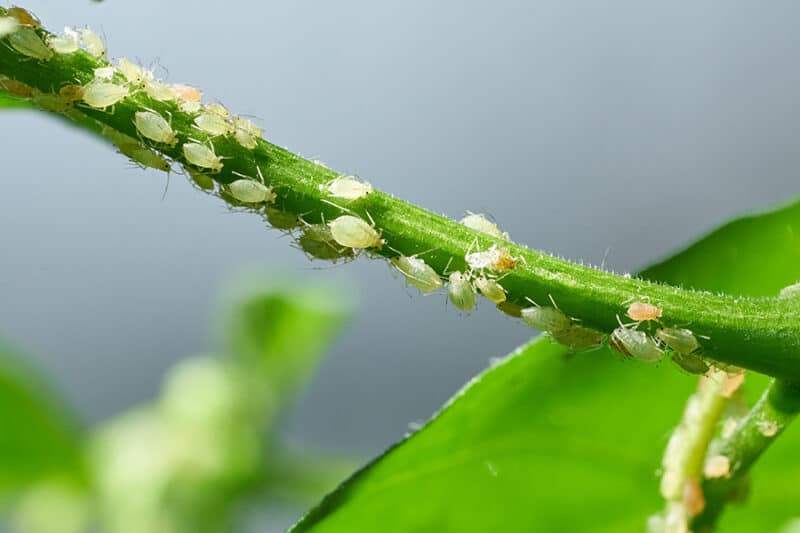
Aphids are such a common pest, it almost better to try prevention rather than wait for them to appear. In fact, they’re such a common problem that we have a whole guide that can help you identify and treat these pests.
Like most sap-sucking insects, aphids excrete honeydew which is a sweet substance that attracts ants and wasps. Honeydew can cause sooty mold.
I treat my plants with neem oil regularly, about once every four weeks. If I have a bad aphid season, I start treating the plants when they develop their first few leaves.
Thrips
Thrips are a sucking bug and if the numbers become too big, sculpit will suffer. They are tiny and you need a magnifying glass to really see them properly.
Thrips spread disease and fly away when disturbed. They gather in large groups and decimate any plant they live on as they suck out the life.
The damage caused by thrips looks like a rusty or silver streaking on the leaves or little white spots on the foliage from sucking the liquid from inside.
Green mulch and garden debris attract thrips, so clean your garden thoroughly. You should do this with all plants, but especially those that attract thrips and aphids.
Thrips can pass on tomato spotted wilt virus. This probably won’t affect your sculpit, but it may be passed on to other vegetables in your garden.
Use neem oil or organic pyrethrum to control them.
Whiteflies
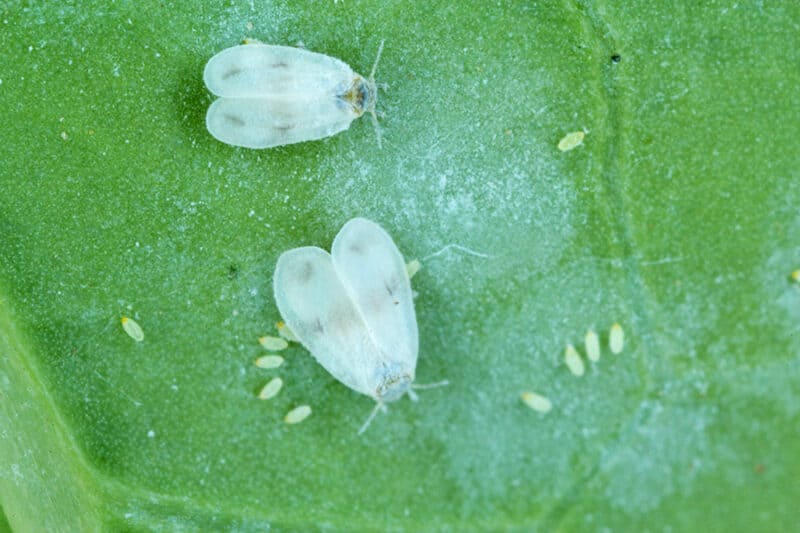
Whiteflies are tiny white triangular flying insects that grow in numbers rapidly. If you have a bad infestation, you can gently shake the plant and they will fly around like a little snowstorm.
Hot weather brings whiteflies out and they can be a real pain in greenhouses. They are another sap-sucking bug, causing damage to foliage.
Use an insecticidal soap with regular applications of neem oil.
Powdery Mildew
If your sculpit gets powdery mildew, it has likely spread from another infected plant, so it’s important to keep all the plants in your garden healthy and free from pests and disease.
It’s generally spread by wind or spores that have been sitting dormant in the debris of the garden.
Powdery mildew is a fungal disease that makes plants look like they’re covered in flour. Eventually, the leaves dry out, turn yellow and die.
You can use a fungicide to control powdery mildew, but a regular application of a half-and-half mix of mik and water can keep most infestations under control.
I use neem oil or a mixture of baking soda and water. Mix a quart of water with a teaspoon of baking soda. Spray all over the plant, covering both the top and bottom of leaves.
Prevention is best with powdery mildew. Make sure the plants get plenty of sun and water first thing in the morning rather than in the evening. Also be sure to regularly puck the leaves to ensure good airflow and you water the soil, not the leaves.
Sooty Mold
Sooty mold grows on the honeydew excretions from pests like aphids and scale. The mold begins to grow and continues until the foliage is covered in black spores. It’s unsightly and the plant will struggle to survive.
First, deal with the insect that has likely caused the mold. Neem oil is also effective against the spores of the mold.
Use a mixture of neem oil and pyrethrum to address both bug and mold at the same time.
Harvesting Sculpit
Pick the leaves anytime starting when they first emerge to when they form older, larger leaves. Traditionally, the leaves are harvested before sculpit flowers, but I keep harvesting for the whole season.
The leaves will regrow after you harvest them, so you can have a regular supply from one plant all summer long.
You can dry sculpit, but like some other herbs, it loses some flavor. Just use more in your dish than fresh. Hang bunches of the leaves in a cool, dry spot until crispy.
Sculpit goes perfectly with risotto. It adds a wonderful flavor, without overpowering the dish.
Use it in soups and salads, meat dishes and omelets. It’s perfectly matched with eggs and pasta dishes.
Try Growing Sculpit
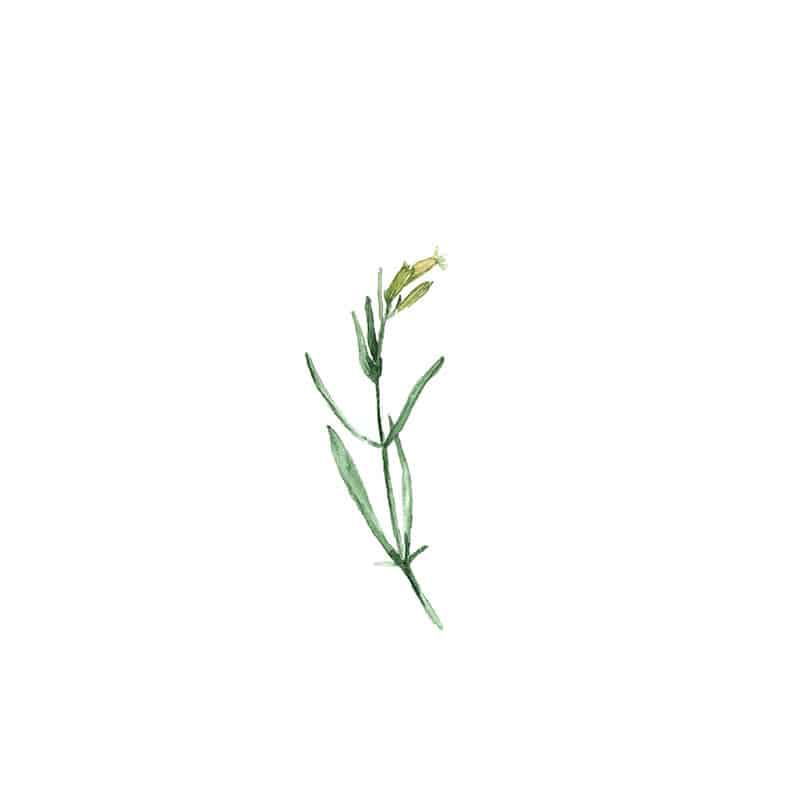
Sculpit is easy to grow because, like a lot of hardy herbs, it’s forgiving and reliable. It seems to thrive no matter how much you neglect it. You’ll be amazed at the flavor sculpit adds to foods and you’ll see why it’s so popular in Italy where they even have an annual festival for it.
